-
 Want to Pamper Your Taste-Buds this Pongal? Here are Mouth-Watering Pongal Recipes You can't Miss in 2019
Want to Pamper Your Taste-Buds this Pongal? Here are Mouth-Watering Pongal Recipes You can't Miss in 2019
-
 Diwali Snacks You Can Make in Your Kitchen, which Are As Healthy As They Are Delicious! (2021)
Diwali Snacks You Can Make in Your Kitchen, which Are As Healthy As They Are Delicious! (2021)
-
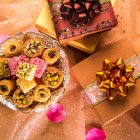 Make Gifting Easy this Festive Season with a Gift Pack: 11 Awesome Ideas for Diwali Gift Packs for 2019
Make Gifting Easy this Festive Season with a Gift Pack: 11 Awesome Ideas for Diwali Gift Packs for 2019
The Legend Behind Ganesh Chaturthi Celebrations

Ganesh Chaturthi also is known as Vinayaka Chaturthi is festival celebrated in honour of Lord Ganesha. It is a ten-day festival that is observed to celebrate the birth of Lord Ganesha. The ten-day festival is celebrated either in August or September according to the Gregorian calendar. In the Indian calendar, the festival begins on Shukla Chaturthi and ends on Anant Chaturdashi.
According to legend, the Mahabharata is said to have been written by Lord Ganesha based on Vyasa’s dictation. He agreed to write the Mahabharata on the condition that Vyasa dictated continuously without pausing. Vyasa also made a pact with Ganesha that he should understand each word before writing. Both Vyasa and Ganesha took ten days to complete the Mahabharata and did not eat food or drink water. To cool down his dehydrated body, clay was applied all over his body and he was immersed in water. That is why Ganesha idols that are usually made of clay are immersed in water at the end of the ten-day festival.
About Lord Ganesha

Lord Ganesha is revered as the elephant-headed god who imparts wisdom and knowledge to the ones who pray to him. Lord Ganesha is also the son of Lord Shiva and Goddess Parvathi. Hindu mythology states that Goddess Parvathi created him from dirt and asked him to guard, while she was taking a bath. However, Lord Shiva who was unaware demanded Ganesha to let him through to see Parvathi. Ganesha denied entry to Lord Shiva and after a fierce duel, Lord Shiva severed the head of Ganesha with a sword.
Upon her return, Parvathi was devastated to see the headless body of Ganesha and demanded Shiva to restore him. The devas were tasked with the job of finding the severed head of Ganesha and returned upon with an elephant head that they were able to locate. Lord Shiva attached the elephant head to his body and brought him back to life. It is believed that Lord Ganesha lives in Mount Kailash along with his parents and other gods. He rides his vahana ‘mouse’ and his favourite snack is modak.
Celebrations in South India

The festival is celebrated with much pomp and fervour in the state of Maharashtra. In other parts of India, the celebrations are toned down and are mostly celebrated as familial gatherings. However, in recent times, the festival has been celebrated on a grand scale in South India that includes – Andhra Pradesh, Karnataka, Kerala, and Tamil Nadu.
Andhra Pradesh and Karnataka

In both these states, the festival is celebrated on a grand scale and in large community gatherings. Big pandals are erected and a big, colourful and decorated statue of Lord Ganesha is displayed for devotees to pay their respect. Each day pujas and aartis are conducted for the Lord and prasad is provided for the devotees. The statue is elaborately decorated with flowers and food offering are presented to him. The food offerings are comprised of a mix of sweet and savoury dishes – modak, kheer, chickpeas and much more.
Tamil Nadu and Kerala
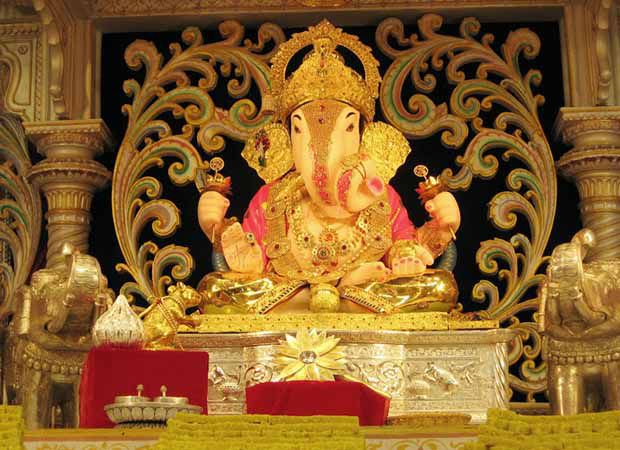
In Tamil Nadu, the festival is celebrated as a family event and as a community event as well. The families buy clay statues of Lord Ganesha and elaborately decorate them with colourful umbrellas and flowers. For ten days, pujas and aartis are performed at home along with their family. Food offerings such as fruits, sweet modak, savoury modak, chickpea sundal, sweet kheer are served as an offering. On the tenth day, the statues of the Ganesha are immersed in a water body. The festival is also celebrated as a community by erecting pandals with lively music and fanfare.
What Rituals are Performed?
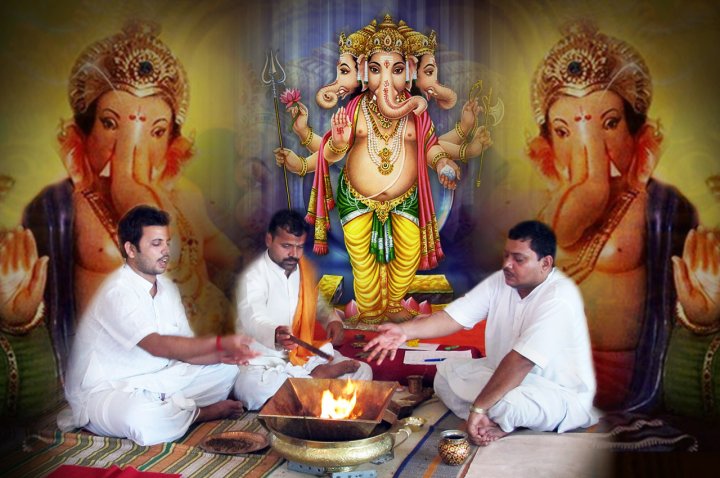
There are certain rituals that are followed to observe Ganesh Chaturthi.
- The festival is inaugurated by singing devotional songs and dance.
- Worshippers start the day by taking a ritual bath and doing puja at home.
- They perform abhishekem for the lord with scented herbs and other ingredients. After the bathing ritual, the idol is decorated with new clothes, flowers, garlands and sandalwood paste.
- After prayer, old mantras are chanted along with hymns sung by devotees. The famous mantras are ‘Ganesha Shubh Labh Mantra’, ‘Ganesha Gayatri Mantra’, and ‘Vakratunda Ganesha Mantra’.
- After chanting the mantras, the aarti is conducted for Ganesh and earthen lamps filled with ghee are lit on pedestal to seek his divine blessings twice a day. Offerings to the lord such as modak, fruits, and flowers are provided.
- On the last day, Ganesh Visarjan is celebrated where the idol is immersed in a water body after a special puja.
- Moreover, devotees also throng pandals and temples to offer special prayers and to seek the blessings of Ganesh.
Colourful Pandal Decorations

In olden times, the festival was celebrated widely during the reign of Maratha King Shivaji. However, during the British rule, the festival lost its significance due to the loss of patrons. Afterwards, it was celebrated as a low-key family event. However, after Independence, the festival was revived by freedom fighter Lokmanya Tilak and celebrated on a grand scale. The festival is celebrated by erecting elaborately decorated and colourful pandals with music systems. People express their joy by dancing to Ganesh songs and participate in huge processions. People also play drums, live music and skits are conducted followed by fireworks. Moreover, devotees who visit these pandals are also treated with snacks and beverages.
Famous Ganesh Chaturthi Recipes from South India
Sweet Modak with Coconut Filling

Modak is believed to be the favourite dish of Lord Ganesh. Modak is a dish made of rice flour dumplings filled with a sweet filling. The sweet filling is usually made of jaggery and coconut.
- Rice flour -1 cup
- Oil -1 tsp
- Jaggery – 1 cup
- Coconut -1 cup grated
- Cardamom powder – 1/4 tsp
- Ghee -1 tsp
Ingredients Needed
- Heat a cup of water in water and once it starts boiling, add a teaspoon of oil and rice flour. Keep stirring the flour to avoid any lumps from forming.
- Transfer the rice flour dough to a plate and knead gently for a few mins. Afterward, close the dough with a damp cloth and rest for 30 mins.
- Melt a cup of jaggery in a vessel with a cup of water and filter the mixture to remove impurities. Then heat the mixture until it starts to boil.
- Add a cup of grated coconut to the jaggery liquid along with ghee and cardamom powder.
- Make small balls from the rice flour and flatten and fill them with the filling.
- Steam the modak for 10 mins and serve them.
Procedure
Savory Modak

A savory version of sweet modak that is made as an offering.
- Rice flour -1 cup
- Water – 1 – 1 1/4 cup (approximately)
- Salt – 1/4 tsp
- Sesame seed oil – 1 tsp
- Whole skinned Urad dal – 1/2 cup
- Bengal gram dal – 1-2 tbsp
- Green chili – 4
- Hing/asafoetida – a pinch
- Salt needed
- Oil -1 tsp
- Mustard seeds -1 tsp
- Curry leaves -4-5 tender leaves
Ingredients needed
Rice flour doughStuffing
Stuffing seasoning
- Heat a cup of water in water and once it starts boiling, add a teaspoon of oil and rice flour. Keep stirring the flour to avoid any lumps from forming.
- Transfer the rice flour dough to a plate and knead gently for a few mins. Afterward, close the dough with a damp cloth and rest for 30 mins.
- Grind the soaked urad dal and steam them in a steamer. Crumble the mixture after it cools and season it.
- Heat a teaspoon of oil, add mustard seeds, curry leaves, and then steamed crumbled dal. Sauté for 10 minutes and remove from the flame.
- Make small balls from the rice flour and flatten and fill them with the filling.
Procedure
Ammini Kozhukattai
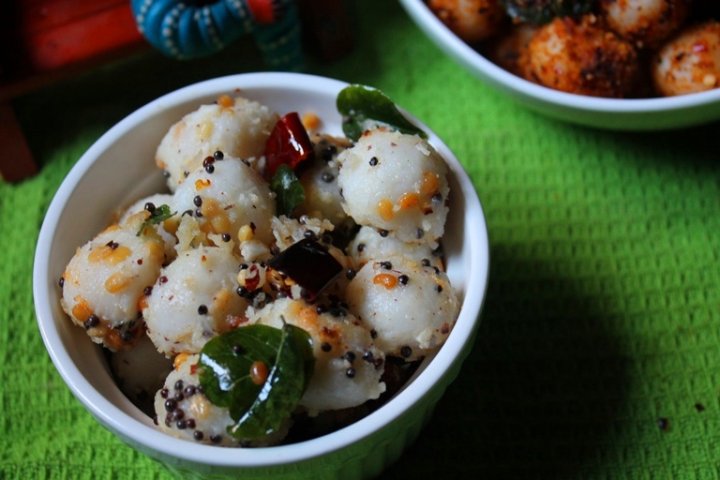
A specialty from Andhra Pradesh and a variety of sweet modak.
- 1/2 cup Rice flour
- 1/3 cup Water
- 1/2 cup - 2 tbsp grated Jaggery(slightly less than 1/2 cup)
- 2-3 tbsp grated fresh/dry Coconut
- 2 Cardamom powder
- 1 tsp ghee
Ingredients:
- Boil water in a vessel, add jaggery and let it melt them completely.
- Add cardamom powder, grated coconut, rice flour to the jaggery mixture and stir them in.
- Once the dough is formed, switch off the flame and knead it gently with little oil.
- Make tiny balls or coin-sized discs and steam the balls in a steamer.
- Spread ghee on the dumplings to make them look shiny and serve them.
Procedure:
Puran Poli
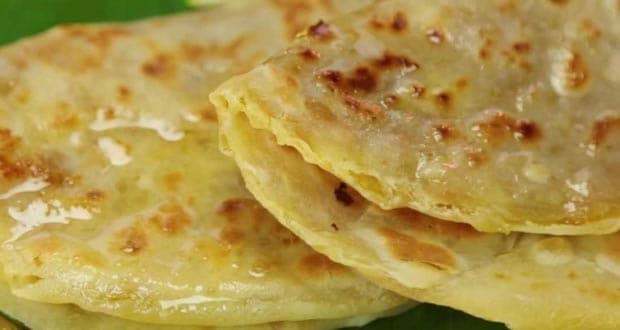
Puran Poli, also known as Bobbatlu or Obattu is famous all over India.
- Ghee/oil, to fry Puran Poli
- 1 cup Flour(Maida)
- A pinch of Turmeric powder
- A pinch of Salt
- 1 1/2 tsp ghee, melted
- 1/3 cup Oil, to soak the dough
- Water, to mix the dough
- 1 cup Chana dal
- 1 cup grated Jaggery
- 2 tbsp. grated fresh Coconut
- 2 Cardamom pods, seeded & powdered
- A tiny pinch of Salt
- 1 tsp Ghee
Ingredients:
Dough:
Filling:
- Mix flour, salt, turmeric powder, ghee, and water. Knead the dough continuously to make a soft pliable dough.
- Pressure cook the chana dal by adding ghee and salt until it is soft.
- Grind the cooked chana dal with coconut, jaggery and cardamom powder to a smooth paste.
- After grinding, let the moisture from the mixture dry before making lemon sized balls from the mixture.
- Prepare a golf-sized ball from the dough prepared earlier and roll them out on a flat surface to 5-inch diameter.
- Place the filling in the middle of the dough and encase the filling with the outer dough.
- Roll them out in the shape of tortillas or chapatti and place it on a hot Tawa.
Procedure:
Appalu
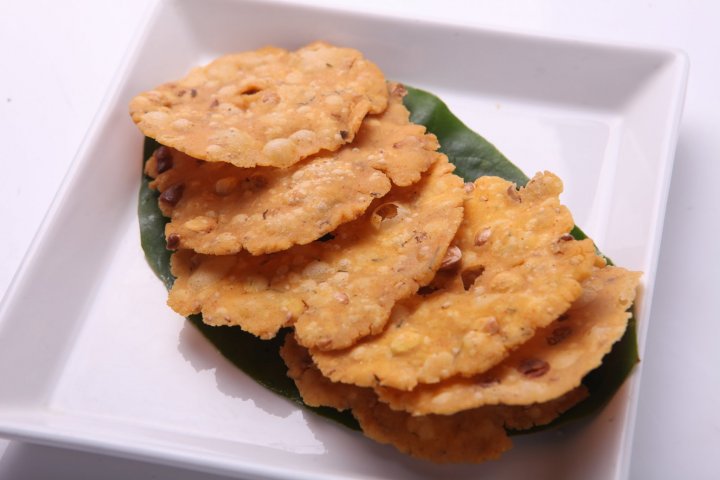
Appalu is also known as sweet appam and is often offered as Naivedhyam during puja and prayers.
- Rice flour 1 1/2 cups (freshly ground at home)
- Sugar 1/2 cup
- Ghee 2-3 tbsp (melted)
- Cardamom powder pinch (optional)
- Oil for deep frying
Ingredients
- Mix rice flour, sugar, and ghee in a mixing bowl to form a dough. Optionally you can add either milk or water to form a smooth dough.
- Make small balls using the dough and fry them in hot oil.
- Fry the balls until they reach a golden color on both sides.
- Remove the balls from the oil and place them on tissue to soak the excess oil.
Procedure
Paala Undrallu & Kudumulu
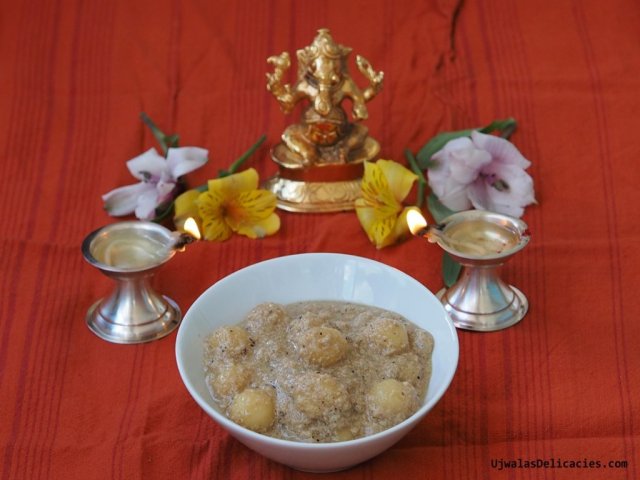
Paala Undrallu are sweet flavored dumplings prepared from rice flour, milk, grated coconut, sesame seeds, and sugar.
- 1 cup of rice flour
- 2 1/2 cups water
- 1 cup of sugar
- 1 cup grated coconut
- 1 cup milk
- 1/2 cup sesame seeds
- ¼ tsp cardamom powder
Ingredients:
- Boil two cups of water and add the rice flour to make a smooth dough.
- Add sugar and water to another vessel and bring them to a boil. Gradually add a cup of grated coconut and stir the mixture for a few minutes.
- Add milk and cook the rice balls in the syrup for 5 minutes or until they are cooked.
- Finally, add milk to the syrup followed by ground sesame seed powder and combine until a thick syrup is formed.
- As a final touch, add cardamom to the mixture and serve hot.
Procedure:
Garelu/Vada
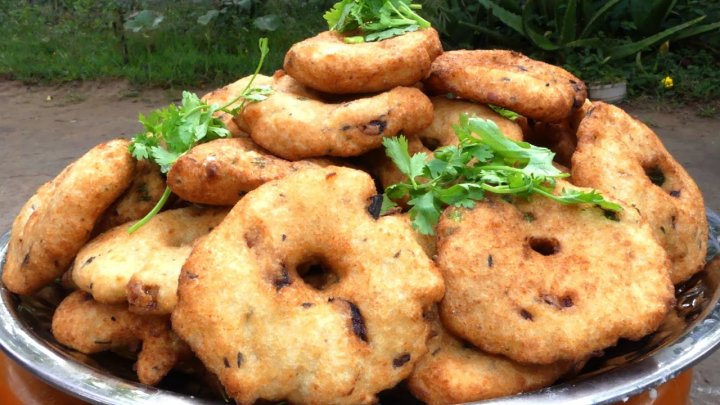
Garelu or vadai is a popular South Indian snack that is served with chutney and sambhar.
- Whole urad dal (without skin) – 1 cup
- Green chilies -2
- Raw rice -1/2 tsp
- Fried gram- 1/2 tsp
- Salt -1 tsp
- Plastic sheet or banana leaf for making vadas
- Oil for deep frying
Ingredients
- Soak the urad dhal, rice and fried gram for an hour.
- Drain the water from the mixture, add green chilies and grind them to a smooth paste by adding little water.
- Grease your palms with oil. Place a ball sized dough on a banana leaf greased with oil. Flatten the dough gently and create a hole at the center for the steam to escape.
- Deep fry the dough in hot oil until they are golden and crispy on both sides.
- Place the fried vadas on blotting paper to remove excess oil.
Procedure
Chickpeas Sundal
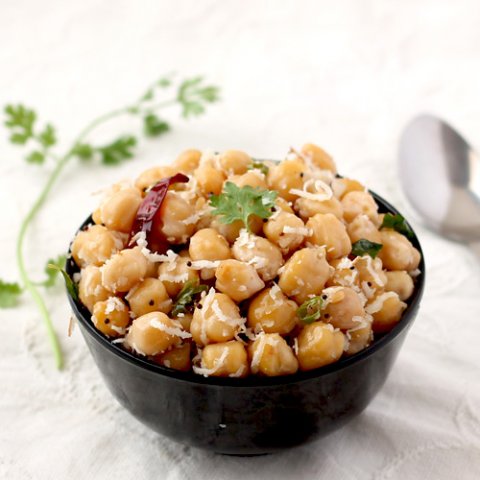
Another favorite dish of Lord Ganesh that is primarily made in Tamil Nadu.
- Chickpeas /chana /garbanzo beans -1 cup
- Raw mango finely chopped or grated- 1/4 cup (optional)
- Coconut – grated 1/4 cup
- Mustard – 1 tsp
- Urad dal -1 1/2 tsp
- Red chilies -2 broken into pieces
- Hing/ asafoetida – 2 pinches
- Curry leaves -little
- Oil -2 tsp
Ingredients
For the seasoning
- Soak the chickpeas in water overnight and boil them until they are soft.
- Heat oil in a pan, add mustard seeds, urad dhal, red chilies, and asafoetida and curry leaves.
- To the seasoning, add boiled chana, salt, and grated coconut.
- Cook them on medium heat until the coconut changes into golden color.
Procedure
Rava Kesari

Rava Kesari, also known as Kesari bath is a famous South India dish made as offering to Lord Ganesh.
- Semolina/Rava- 1 cup
- Sugar- 1 cup
- Ghee - 2 tbsp
- Water - 2.5 to 3 cups
- Cardamom powder - 1/2 tsp
- Cashews/Raisins/Almonds - as needed
- Saffron - a pinch
Ingredients
- Heat little oil in a pan, add the Rava and roast it until it turns light golden brown. Set it aside when done.
- Add a tablespoon of ghee and roast the dry fruits.
- In a pan, add water and bring it to boil. Once the water boils, add roasted Rava into it.
- As the rava tightens, add sugar, ghee and cardamom powder to the mixture.
- Make sure there is no formation of lumps. Add the dry fruits and serve them hot.
Procedure
Coconut Barfi
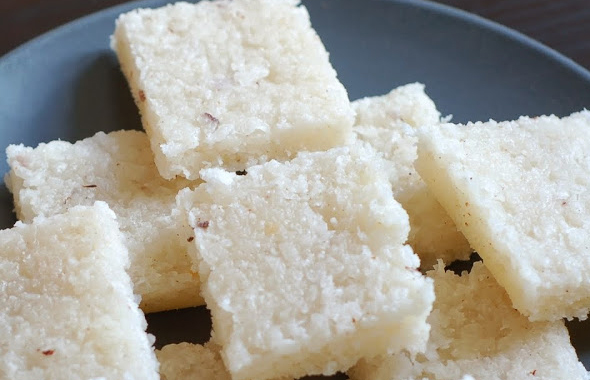
A most common and favorite sweet made in India. The dish is made with coconut and sugar.
- Sweetened Condensed milk – 1 cup
- Desiccated coconut – 1½ cup
- Ghee/Butter – 1 tsp
- Milk – 2 tbsp
- Cardamom – 2, crushed
- Sugar – 1 tsp
- Cashews – 5, chopped and few for garnishing
- Desiccated coconut – ¼ cup for rolling
Ingredients
- Add desiccated coconut to a pan and toast it until the moisture evaporates.
- To the coconut mixture, add condensed milk and cook them on a low flame.
- To the mixture, add cardamom powder and milk to the mixture and boil.
- Once the mixture is done, add them to tray greased with oil and pour the mixture into the tray.
- Wait until the mixture sets, cut them into squares using a sharp knife and garnish with dry fruits. To it, add condensed milk, mix and cook on low flame.
Procedure
-
 Diwali Snacks You Can Make in Your Kitchen, which Are As Healthy As They Are Delicious! (2021)
Diwali Snacks You Can Make in Your Kitchen, which Are As Healthy As They Are Delicious! (2021)
-
 भारतीयों का मिठाई के लिए एक विशेष झुकाव है: 10 सबसे स्वादिष्ट भारतीय मिठाइयाँ विकल्प जिन्हे देख कर आपके मुंह में पानी आ जायेगा (2019)
भारतीयों का मिठाई के लिए एक विशेष झुकाव है: 10 सबसे स्वादिष्ट भारतीय मिठाइयाँ विकल्प जिन्हे देख कर आपके मुंह में पानी आ जायेगा (2019)
-
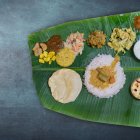 Bring the Flavours of Onam Sadhya to Your Kitchen! List of 10 Onam Sadhya Dishes Which Are As Easy to Make As They Are Delicious to Eat (2019)
Bring the Flavours of Onam Sadhya to Your Kitchen! List of 10 Onam Sadhya Dishes Which Are As Easy to Make As They Are Delicious to Eat (2019)
-
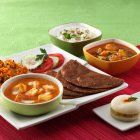 Fasting Does Not Mean Starving! Keep Your Energy Up with These 9 Delicious Navratri Recipes & Fasting Tips for Navratri (2019)
Fasting Does Not Mean Starving! Keep Your Energy Up with These 9 Delicious Navratri Recipes & Fasting Tips for Navratri (2019)
-
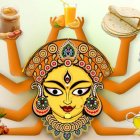 Planning to Fast During Navratri? Here are 9 Quick and Healthy Recipes for Your Navratri Fast in 2019!
Planning to Fast During Navratri? Here are 9 Quick and Healthy Recipes for Your Navratri Fast in 2019!
Don't Forget to Try These Recipes on Ganesh Chaturthi in 2019
Besides offering your respects to the lord, the Ganesh Chaturthi festival is incomplete without these dishes. So, take your pick and seek the blessings of Lord Ganesha.

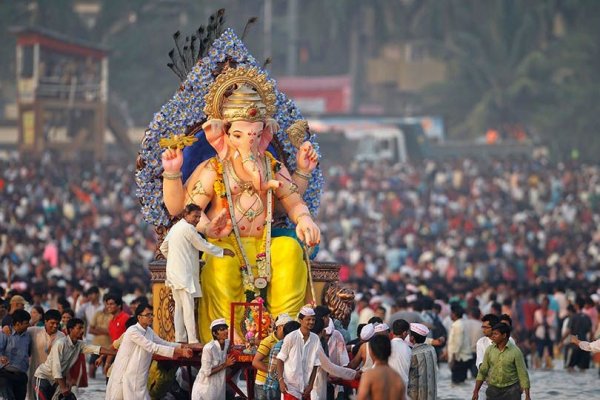
 Highlight the Best Facets of Your Incomparable Beauty: Discover the Best Face Highlighter Currently Available in India and Everything You Need to Know About Using Face Highlighters for Maximum Effect (2023)
Highlight the Best Facets of Your Incomparable Beauty: Discover the Best Face Highlighter Currently Available in India and Everything You Need to Know About Using Face Highlighters for Maximum Effect (2023)
 Forget the Blemishes and Get that Picture Perfect Flawless Radiance on Your Face: Check out the Best Foundations for Oily Skin Currently Available in India and Everything You Need to Know About Makeup Foundations (2023)
Forget the Blemishes and Get that Picture Perfect Flawless Radiance on Your Face: Check out the Best Foundations for Oily Skin Currently Available in India and Everything You Need to Know About Makeup Foundations (2023)
 Make Your Presence Felt Wherever You Go: Discover the Best Perfumes Under 2000 for Both Men and Women to Announce Your Arrival and Make Any Occasion Memorable (2023)
Make Your Presence Felt Wherever You Go: Discover the Best Perfumes Under 2000 for Both Men and Women to Announce Your Arrival and Make Any Occasion Memorable (2023)
 Protect Your Oily Skin from the Harmful Rays of the Sun: Discover the Best Gel Based Sunscreens for Oily Skin and Everything You Need to Know Before Buying One (2023)
Protect Your Oily Skin from the Harmful Rays of the Sun: Discover the Best Gel Based Sunscreens for Oily Skin and Everything You Need to Know Before Buying One (2023)
 Minor Blemishes and Wrinkles Affecting Your Confidence? Check out the Best BB Creams to Conceal Your Worries and Nourish Your Skin to Restore the Healthy, Radiant and Glowing Complexion Back Again (2023)
Minor Blemishes and Wrinkles Affecting Your Confidence? Check out the Best BB Creams to Conceal Your Worries and Nourish Your Skin to Restore the Healthy, Radiant and Glowing Complexion Back Again (2023)
